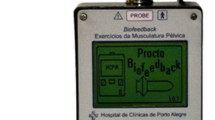Abstract
Background and aims
Biofeedback therapy has been extensively used and accepted in fecal incontinence, but reports of its efficiency vary. We evaluated feedback therapy efficiency when (a) selecting the patient’s subject of the therapy, and (b) customizing the therapy protocol used for each patient.
Patients and methods
Fifty-three patients with fecal incontinence were selected for biofeedback training. The treatment program was customized for each patient depending on the underlying dysfunction, the patient’s cooperative and learning attitude, and the patient’s progress. Biofeedback efficiency was measured using clinical scores, subjective satisfaction of the patient, and manometry.
Results
Incontinent scores showed improvement in 66% of patients and good improvement in 11% and 15%, respectively, indicating an overall excellent effect of the therapy. Subjective satisfaction was strongly correlated with the previous incontinent scores. Comparison of manometry parameters before and after biofeedback therapy, including maximum anal resting, maximum anal squeeze pressure, and maximum duration of the squeeze, all showed significant differences. In addition, the sensory threshold significantly decreased after biofeedback therapy. Clinical improvements were maintained during the following 12 months.
Conclusion
Biofeedback improves objective and subjective parameters of anorectal function. Selection of patients and customization of the therapy program increased biofeedback efficiency for the treatment of fecal incontinence.
Similar content being viewed by others
References
Enck P (1993) Biofeedback training in disordered defecation. A critical review. Dig Dis Sci 38:1953–1960
Heymen S, Jones KR, Ringel Y, Searlett Y, Whitehead WE (2001) Biofeedback treatment of fecal incontinence: a critical review. Dis Colon Rectum 44:728–736
Jensen LL, Lowry AC (1997) Biofeedback improves functional outcomes after sphincteroplasty. Dis Colon Rectum 40:197–200
Fynes MM, Marshall K, Cassidy M, Behan M, Walsh D, O’Connell PR, O’Herlihy C (1999) A prospective, randomized study comparing the effect of augmented biofeedback with sensory biofeedback alone on fecal incontinence after obstetric trauma. Dis Colon Rectum 42:753–758
Chiarioni G, Scattolini C, Bonfante F, Vantini I (1993) Liquid stool incontinence with severe urgency: anorectal function and effective biofeedback treatment. Gut 34:1576–1580
Ko CY, Tong J, Lehman RE, Shelton AA, Schrock TR, Welton ML (1997) Biofeedback is effective therapy for fecal incontinence and constipation. Arch Surg 132:829–833
Rao SS, Welcher KD, Happel J (1996) Can biofeedback therapy improve anorectal function in fecal incontinence? Am J Gastroenterol 91:2360–2366
Ryn, AK, Morren GL, Hallbook O, Sjodahl R (2000) Long-term results of electromyographic biofeedback training for fecal incontinence. Dis Colon Rectum 43:1262–1266
Keck JO, Staniunas RJ, Coller JA, Barrett RC, Oster ME, Schoetz DJ Jr, Roberts PL, Murray JJ, Veidenheimer MC (1994) Biofeedback training is useful in fecal incontinence but disappointing in constipation. Dis Colon Rectum 37:1271–1276
Guillemot F, Bouche B, Gower-Rousseau C, Chartier M, Wolschies E, Lamblin MD, Harbonnier E, Cortot A (1995) Biofeedback for the treatment of fecal incontinence. Long-term clinical results. Dis Colon Rectum 38:393–397
Glia A, Gylin M, Akerlund JE, Lindfors U, Lindberg G (1998) Biofeedback training in patients with fecal incontinence. Dis Colon Rectum 41:359–364
Chiaroni G, Bassoti G, Stegagnini S, Vantini I, Whitehead (2002) Sensory retraining is key to biofeedback therapy for formed stool fecal incontinence. Am J Gastroenterol 97:109–117
Patankar SK, Ferrara A, Larach SW, Williamson PR, Perozo SE, Levy JR, Mills J (1997) Electromyographic assessment of biofeedback training for fecal incontinence and chronic constipation. Dis Colon Rectum 40:907–911
Vaizey C, Carepeti E, Cahill JA, Kamm (1999) Prospective comparison of faecal incontinence grading systems. Gut 44:77–80
Pescatori A, Anastasio C, Bottini A, Mentasi A (1992) New grading and scoring for anal incontinence. Dis Colon Rectum 35:482–487
Whitehead WT, Wald A, Norton NJ (2001) Treatment options for fecal incontinence. Dis Colon Rectum 44:131–142
Tets WF van, Kuijpers JH, Bleijenberg G (1996) Biofeedback treatment is ineffective in neurogenic fecal incontinence. Dis Colon Rectum 39:992–994
Rao SS (1998) The technical aspects of biofeedback therapy for defecation disorders. Gastroenterologist 6:96–103
Rao SS, Enck P, Loening-Baucke V (1997) Biofeedback therapy for defecation disorders. Dig Dis 15 [Suppl 1]:78–92
Jorge M, Wexner S (1993) Etiology and management of fecal incontinence. Dis Colon Rectum 36:77–97
Martínez-Puente MC, Pascual JA, Lomas M (2000) Biofeedback en el tratamiento de la incontinencia fecal: nuestra experiencia. Cir Esp 68:453–456
Leroi AM, Dorival MP, Lecouturier MF, Saiter C, Welter ML, Touchais JY, Denis P (1999) Pudendal neuropathy and severity of incontinence but not presence of an anal sphincter defect may determine the response to biofeedback therapy in fecal incontinence. Dis Colon Rectum 42:762–769
Norton C, Kamm MA (1999) Outcome of biofeedback for faecal incontinence. Br J Surg 86:1159–1163
Author information
Authors and Affiliations
Corresponding author
Rights and permissions
About this article
Cite this article
Martínez-Puente, M.d.C., Pascual-Montero, J.A. & García-Olmo, D. Customized biofeedback therapy improves results in fecal incontinence. Int J Colorectal Dis 19, 210–214 (2004). https://doi.org/10.1007/s00384-003-0537-5
Accepted:
Published:
Issue Date:
DOI: https://doi.org/10.1007/s00384-003-0537-5




